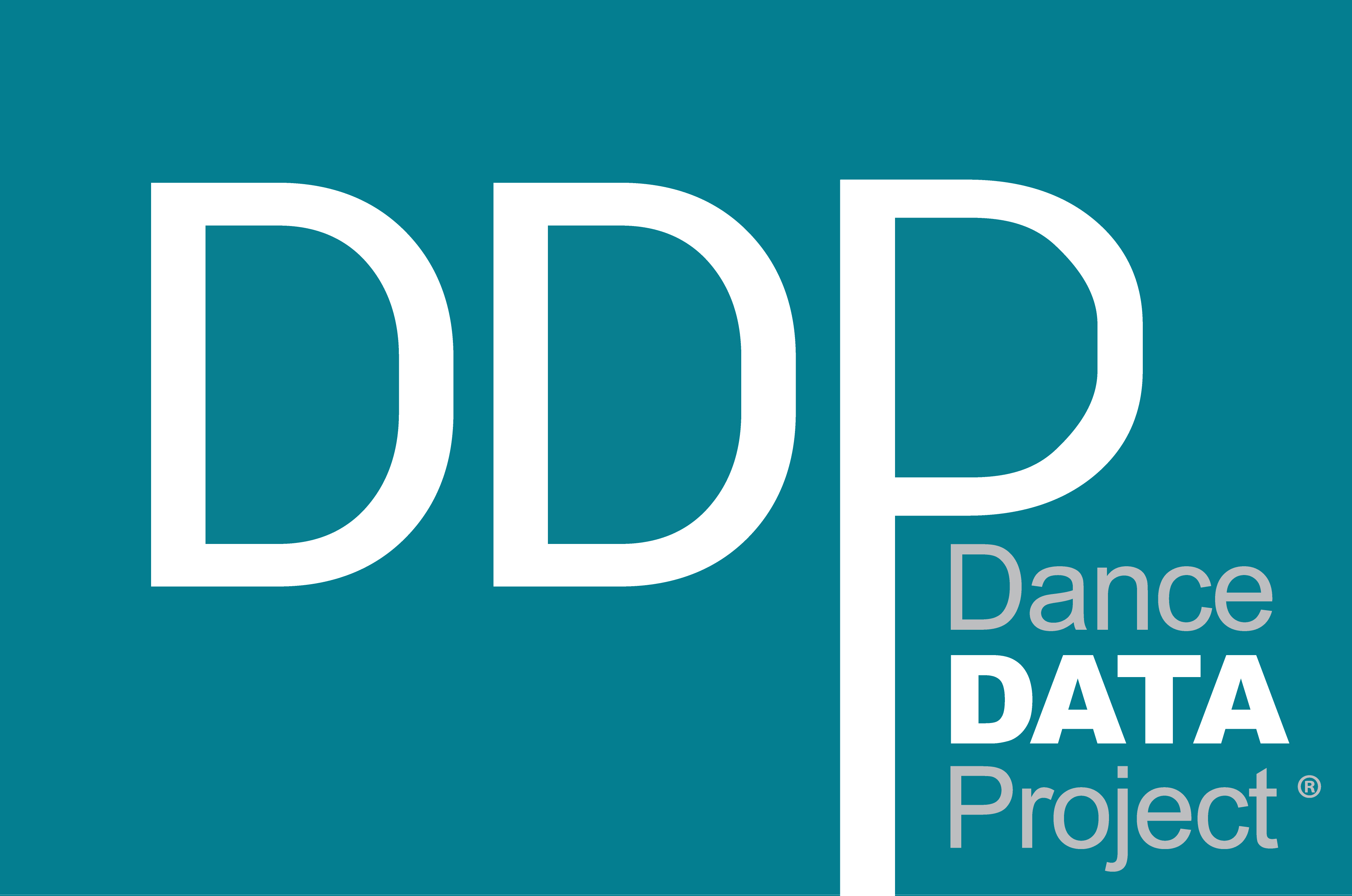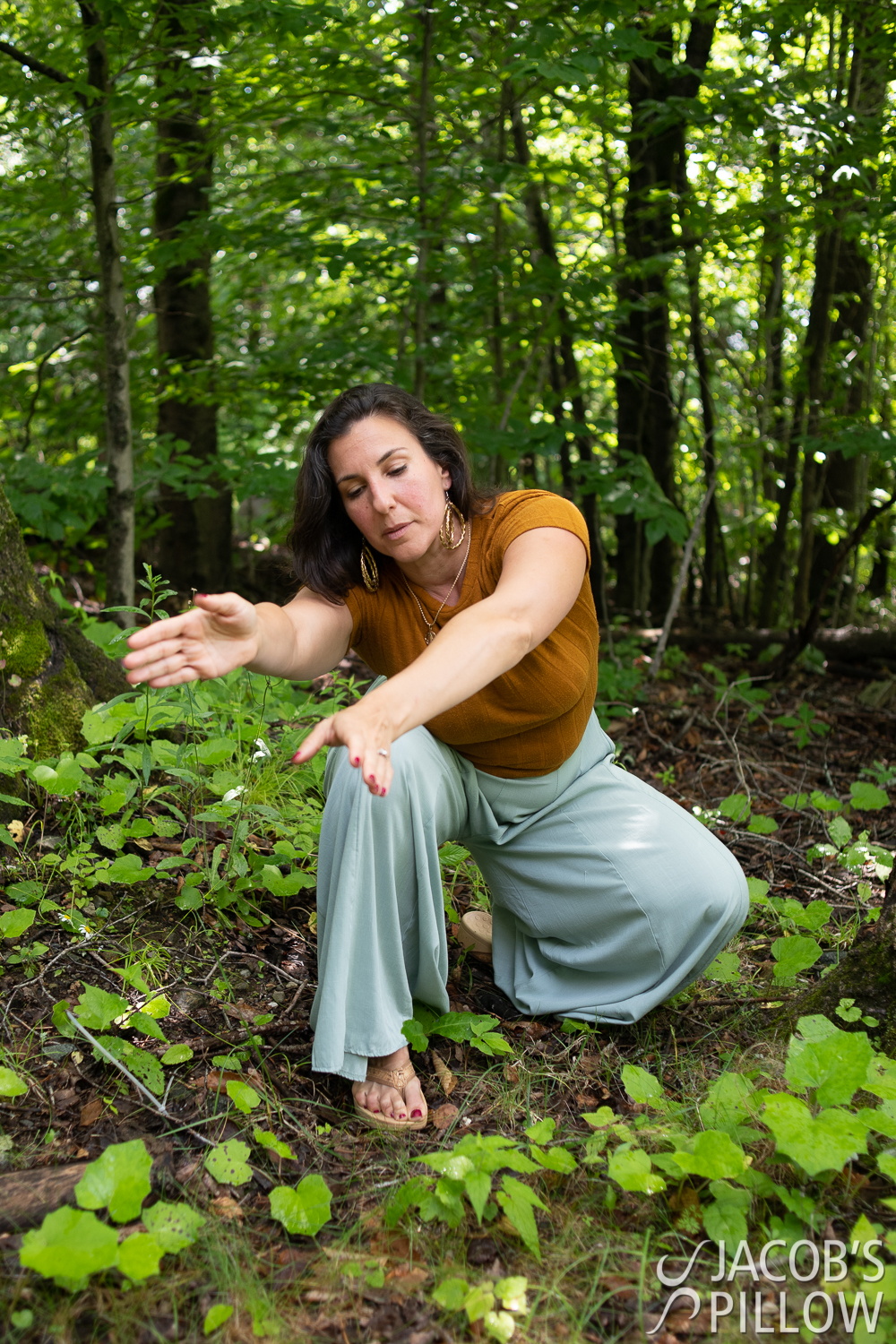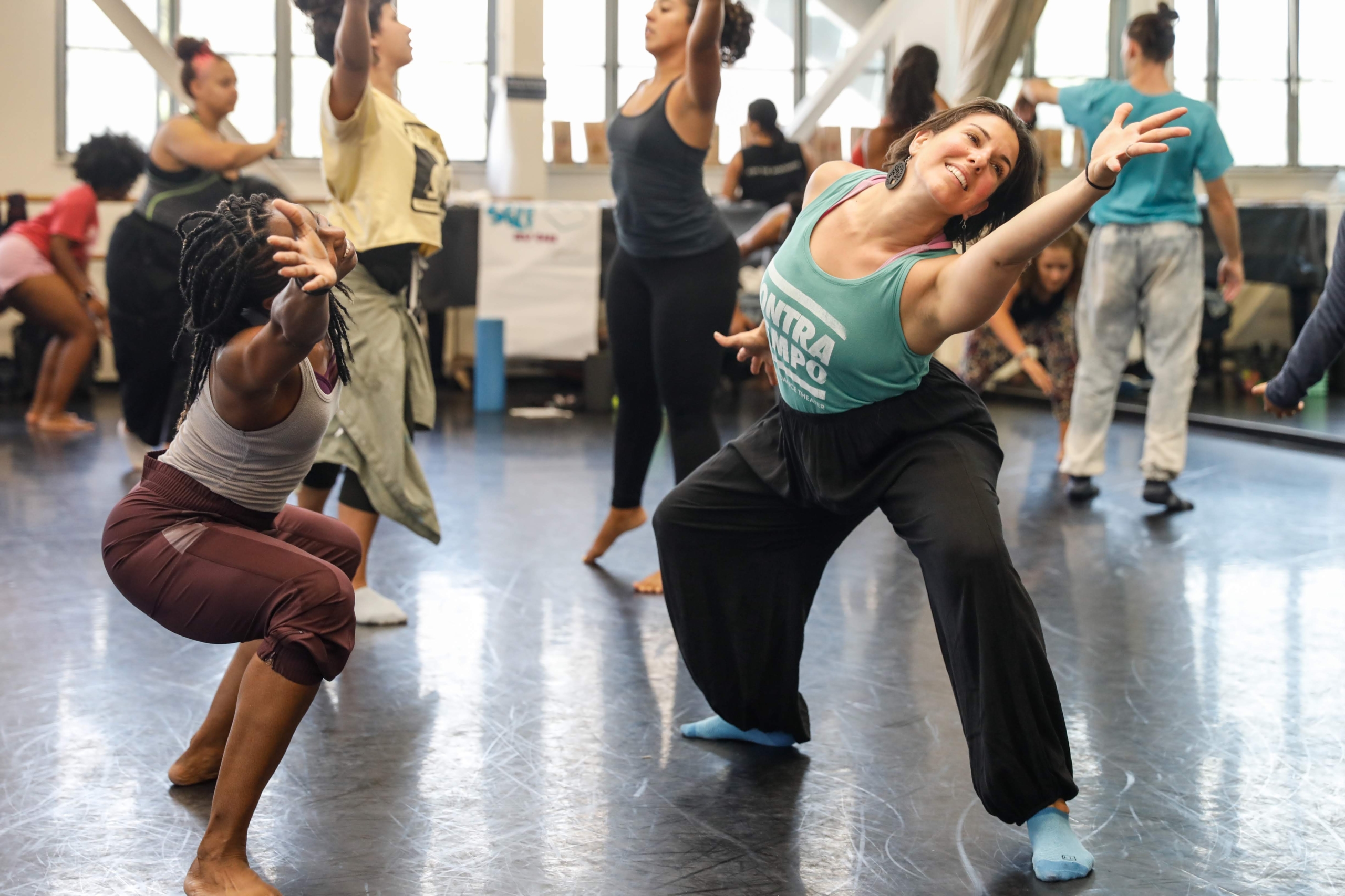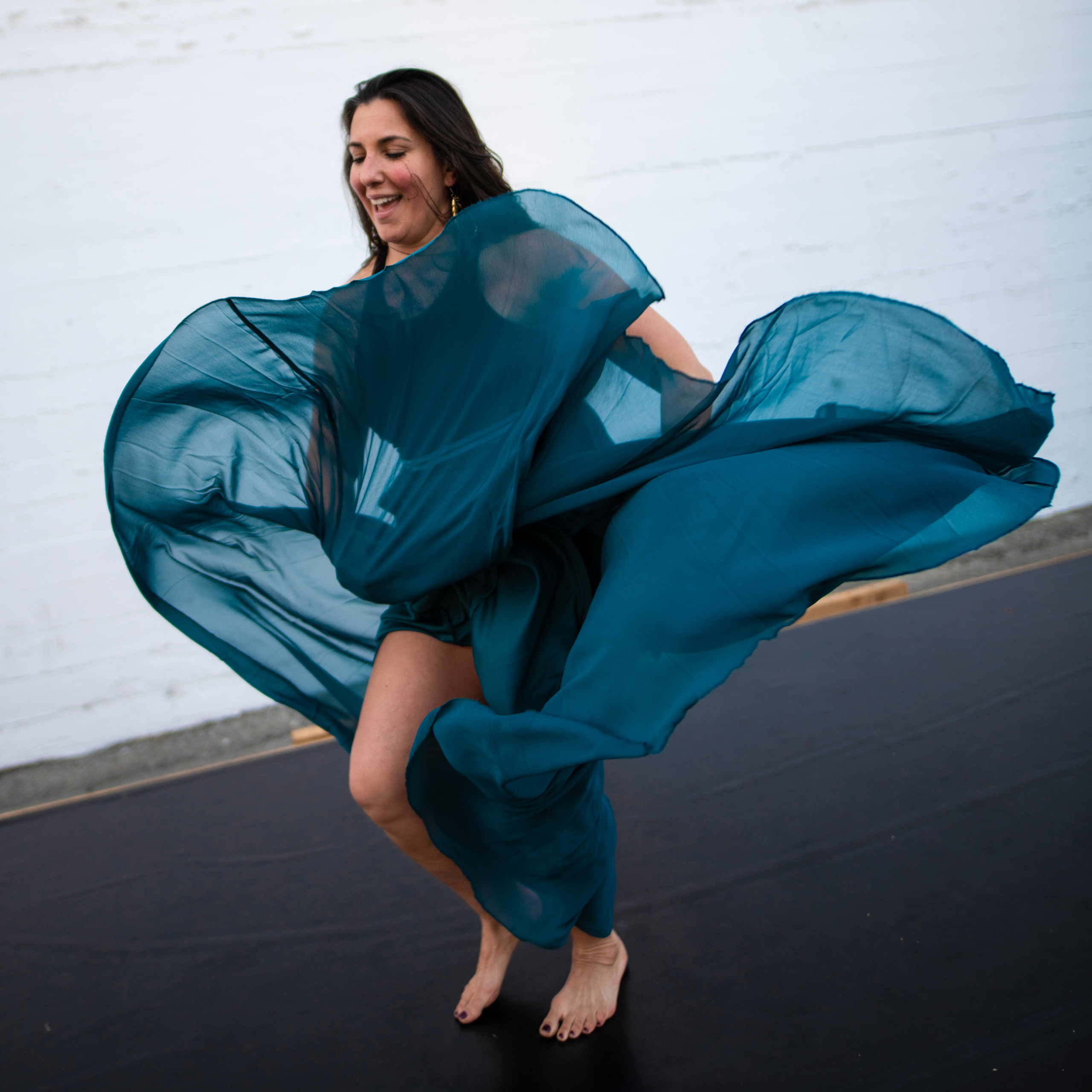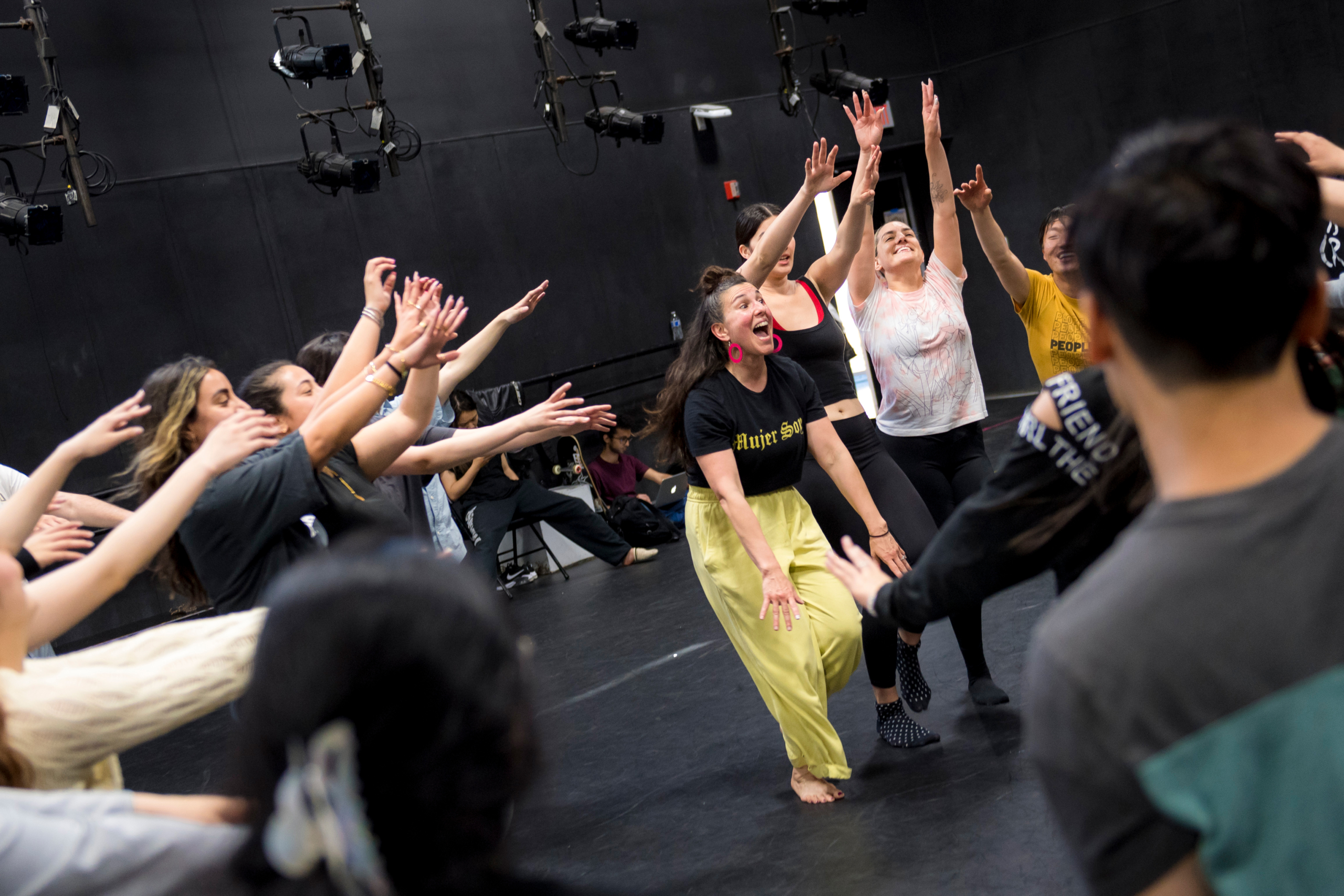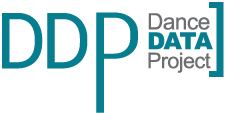DDP Talks To Ana Maria Alvarez (Founding Artistic Director)
CONTRA-TIEMPO Activist Dance Theater
Tell us about the founding of CONTRA-TIEMPO. Specifically, can you explain how your Master’s thesis on Latin Dance, social resistance, and policies around U.S. immigration acted as the impetus for the company’s creation?
I didn’t set out to create a company – I knew I wanted to use dance as a way to transform the world – I went into graduate school knowing that – and my thesis concert “CONTRA-TIEMPO / Against the Times” took on immigration as a site to explore resistance. It was during the Bush era, and there was a lot of conversation in the public sphere that was rooted in this idea of “with us or against us.” Bush and his supporters were suggesting that to be supportive of immigrant rights, or against his immigration policy, you were somehow ‘not American’. Looking back at this, it was so much less violent than the conversations and actions of now… but I was fascinated by how ‘resistance’ was being framed in such a negative light. Resistance is a critical part of partner dancing, and an incredible metaphor for how dysfunctional it’s absence can be. I wanted to make a work that engaged my love and embodiment of Salsa as a mechanism to express my ideas of social justice and resistance. I also wanted to make a work that fully encompassed all of me as a dancer – since all of the work I had witnessed and been a part of up until then felt very compartmentalized style-wise. Artists were working very genre-specific – or there was ‘fusion’ which felt like just a mix of everything. I wanted to make work that fully embodied the sabor of my ancestral dance practices with the nuance, storytelling, and rigor of theater and contemporary dance making. After sharing my thesis project I decided I wanted more people to experience the work and engage with this metaphor of resistance and struggle- not as a negative but as a fundamental tool for building a more loving and just world – and so CONTRA-TIEMPO was born.
You established the company as a space to “engage diverse audiences, cultivate dancer leaders, and center stories not traditionally heard on the concert stage.” How do these goals inform your work? Since your founding in 2005, what have you accomplished towards this mission?
There’s incredible power to setting clear intentions, and then moving towards those intentions even when the world tells you it’s not possible. From the beginning and still today, CONTRA-TIEMPO engages diverse audiences and centers stories that weren’t originally heard on the concert stage. I love that the world has been shifting tremendously since I first founded the company, and the stories and experiences that we reflect on stage are no longer as underrepresented as before – don’t get me wrong – we still have a long way to go, but the fact that in my Introduction to Dancemaking class at UCSD I can share the work of so many artists with my students who are reflecting diverse voices, in terms of culture, race, gender, identity, and beyond is tremendous and gives me hope. There are so many more artists out there now, thriving and sharing their truth, with support from the field, than when I was coming up.
In CONTRA-TIEMPO we are also continuing to cultivate dancer leaders both internally and with folks outside of our organization. Some of the field’s brightest movers and activists have been a part of our work over the years. Over almost 2 decades, we’ve been shifting, responding, growing, and learning how to build an organization that deeply values human beings, and centers care. It hasn’t always been easy and sometimes it’s been really messy but there has always been a greater vision as to what this work can create in the world. We’ve kept this larger intention at the forefront while also working slowly and closely on our individual relationships and building systems that support our humanity, it feels like it’s finally working! We also recently made our leadership structure more horizontal to build a more sustainable future for this vision and to support me as I expand my work in the academy. I am no longer functioning as the sole artistic and executive director of CONTRA-TIEMPO but we now have an incredible leadership team. Our team includes 4 powerful directors; Jannet Galdamez, our programming and rehearsal director, Ruby Morales, our resource director (both of them also are still dancing with the company), Karina Sainz, our managing director, and me, our artistic director. Additionally, we have several incredible staff members who are part-time including Jasmine Stanley, who is our communications and marketing guru, holly johnston, our somatic ecologist, as well as our administrative team – all doing brilliant work to help support this vision and mission.
You’ve mentioned that your work is inspired by your “upbringing as a Cuban American raised primarily in the Southeastern United States.” How has your family and heritage impacted your career? Where in your choreography can we see those influences?
My father was born in Cuba and came over as a pre-teen after the revolution, and my mother is Southern, the child of a preacher in North Carolina and Georgia. They met in NC and have dedicated their lives to the fight for workers’ rights and economic justice through the union movement. I grew up in the communist workers’ party and on picket lines. I often say the culture I come from feels less about my Cuban-ness and more about the politics and activism of my family. Through my parent’s movement work, I grew up in a multi-racial, multi-ethnic, multi-generational, and spiritually diverse village of people from all over the country and world, all dedicated to a larger sense of justice and belonging. With that being said, I was always very clear that I was Cuban American, through dance, language, and food, my Cuban-ness is what made me feel grounded and clear in the chaos of the world. I began studying Afro-Cuban, Afro-Haitian, West African, and Dunham Technique with Dr. E. Gwynn at A&T State University when I was in high school. To the dismay of many of my Cuban family in Miami, I began traveling to Cuba when I was 18 – and went back over 15 times to study with Cutumba Baile Foklorico de Santiago de Cuba and Narciso Medina in La Habana – along with Jawole Willa Jo Zollar of the Urban Bush women, these artists were all important parts of my deepening my understanding of who I was as a dancer, a mover, and a human being. UBW and Jawole showed me it was possible to be a radical change maker while also being a dance maker! The impact of U.S. Imperialism is something that I have felt very personally through my family and the village that raised me – so in this way, my Cuban-ness shows up in how I make work, think about the world, and engage in (the) movement.
Your work – including pieces like Against the Times, I Dream America, Full Still Hungry, and Agua Furiosa – addresses such topics as the relationship between Black and Latino communities, food inequality, the politics of consumption, and environmental justice. How do you approach depicting these subjects in your choreography? Tell us about your use of art-making to influence social change.
In our bodies, lives truth. These incredible instruments give us access to our past and allow us to heal and transform ourselves and the future. As a dance maker, I am always initially inspired by something personal; a story, a feeling, a dream, an ancestor. From this initial inspiration, I usually go down a winding path of research, curiosity, and exploration that quickly links me to a larger world/framework/issue. I don’t usually say: I am going to make a piece about oppression or the politics of food – but these larger contexts emerge from questions that I ask inside of a creative process. I get through this initial exploring/winding pathway part usually on my own or in conversation with a few close friends/family/collaborators and I begin to build the team. I get clarity about the big ideas and concepts for a few years and then move into a larger process with the company/movement artists/collaborative team. This second part of the process, working with the full collaborative team also takes a few years and is a beautiful building of a work outside of myself, asking for everyone to show up in their brilliance to build something more amazing than any of us would be capable of by ourselves. Once the work premieres we then continue to edit, add, play, and deepen before it feels like the work is finished. The process of art making is like movement building and social change work – it’s slow and tedious and takes a great deal of care and consistency. I’ve gotten clearer about it over the past two decades and I will say that without fail all who are involved are impacted – which is why we began to invite community members to this process… extending out the ripples of impact beyond the artist collaborators through choreographic labs and community casts.
One of your signature works, joyUS justUS, was created in 2017 to celebrate community, femininity, and joy – and is still frequently performed around the country. How does this piece reflect CONTRA-TIEMPO’s mission, and why do you continue presenting this particular work?
This piece feels like an embodiment of all that we stand for – I have joked that joyUS justUS is like our Revelations! It’s a work that deeply embodies our values and physical practices of our ancestral technologies – our Afro-Latine social dance forms that embody powerful ancient wisdom of joy, power, and community building. It also is in direct communication with our evolving understanding of Umbuntu, inLakesh, muchos somos, I am another you, I am because you are – these ideas and concepts are beyond the now and yet feel so incredibly timely. I hope that we will continue to share this work – as the world is calling it forth. And I also hope that one day it won’t be so necessary.
The company has been invited to represent American contemporary dance abroad several times: through The Obama administration’s U.S. Department of State cultural exchange program, at the Spotlight USA dance platform in Plovdiv, Bulgaria, and as part of the South American DanceMotionUSA tour. How do you use your work to connect global audiences, communicate differing perspectives, and engage with varied international communities? How do you aim to represent American dance through these types of collaborations?
We have also been invited by the US Embassy in El Salvador – and I find that every time we go abroad we have the unique opportunity to represent voices, experiences, and realities that often get overlooked or not shared about outside of the US – and that we as North Americans who have families who were immigrants, enslaved, refugees and colonizers, we have a unique opportunity and responsibility to build solidarity and connection abroad. I would love to see us tour more often internationally- each time we have shared our work outside of the US we have learned so much and also have been able to contribute to a larger conversation of global connection, equity, and solidarity. As a company, our social dance practice is so deeply connected to the concert dance work – which gives us the unique ability to enter into spaces with connection at the forefront. Connection first is our way. We don’t drop into places, share our work, and leave. When CONTRA-TIEMPO tours – nationally or internationally – we BE with people – from the stewardess to the taxi cab driver, to the person working at the bodega counter, we meet, connect, go out dancing with, and befriend everyone we come into contact with and also make it our commitment to engage with the community as a part of our residency. This allows us to build community beyond the performance and to meaningfully connect human to human and feel more clearly the ripples that are possible from the art we are sharing.
One of the company’s values is exploring how our identities “define us and liberate us, make us unique, and connect us to a larger community.” Through this value, how do you specifically celebrate and uplift female-identifying artists, collaborators, and leaders? Your most recent project, ¡azúcar! just made its Los Angeles debut and is scheduled to appear next April at UC San Diego’s Epstein Amphitheater. What else is the company working on right now and what are your goals for the future?
The framework of CONTRA-TIEMPO isn’t about one person – in a male-dominated field (choreography) where there are many more female dancers – the framework that has been passed down is one of patriarchy and white supremacy. The intentional breaking down of hierarchy in our creative process, in our classrooms, in our board rooms, and on our staff has all been a part of this work to liberate us all. There is a reason that our company isn’t called the Ana Maria Alvarez dance company. I have always known that this work isn’t about me as an individual but about what was possible for the world. I used to ask the question: how can dance transform the world? That was the first question that had me start this work – and as our questions have evolved so has our reach. This design was always intentional but we haven’t always been living in such clear alignment – it took time and a lot of sweat, tears, collaboration, mistakes, and building community to get us here. With that said, this has all been built and designed with the sacred feminine as a guiding light.
I just recently started a new journey as a tenured faculty member at UC San Diego’s Theatre & Dance Department. The work I am beginning to do at UCSD is the next phase of this vision, engaging this question of how movement can transform the world. So often I have felt like this work and vision wasn’t welcome in the academy. There is more space right for these practices, for bodies gathering and moving together, for people listening and engaging with one another from a place of compassion and connection – there is more space for collective liberation practice and these large institutions are shifting as new frameworks and conversations are showing up through people’s bodies- again it’s slow and tedious work as these institutions have created so much harm and were built with frameworks rooted in inequity and injustice. But the time is now. Things are moving and shifting and I am grateful to be in the mix!
I am very excited that we will be sharing our most recent project, ¡azúcar! at UCSD at the Epstein on April 11th. Before that, we are headed to APAP in January, and Jacob’s Pillow in February to deepen the physical language of the work. We have a few more tours schedules for joyUS justUS and ¡azúcar! but are always looking for more opportunities to share the work! In addition to building the movement at UCSD, I will also be collaborating with Cornerstone Theater on a new work called body politic and on a work called Poltluck with my sibling, writer, composer, Cesar Alvarez. CONTRA-TIEMPO will be building our next large-scale multi-year project with holly johnston called “roots of loving us”. This summer, August 2024, we will be having our CONTRA-TIEMPO Futuro summer dance intensive, building the next generation of movement leaders! Excited for the future!
What sort of impact have you seen DDP’s work have on the dance industry, and how can we help you and other female directors and choreographers succeed?
The work you all are doing is so important and helpful. The larger field of dance has, for so long, been focused mainly on ballet and contemporary dance – and more recently the definition of the field is expanding to include artists like me and companies like CONTRA-TIEMPO. This work is critical to building a more inclusive future and moving the voice of embodied artists into the world. I deeply believe that those of us who work with and understand bodies have a profound responsibility and calling to move humanity forward… again, it is time! Thank you all for being a part of this important and timely work!

